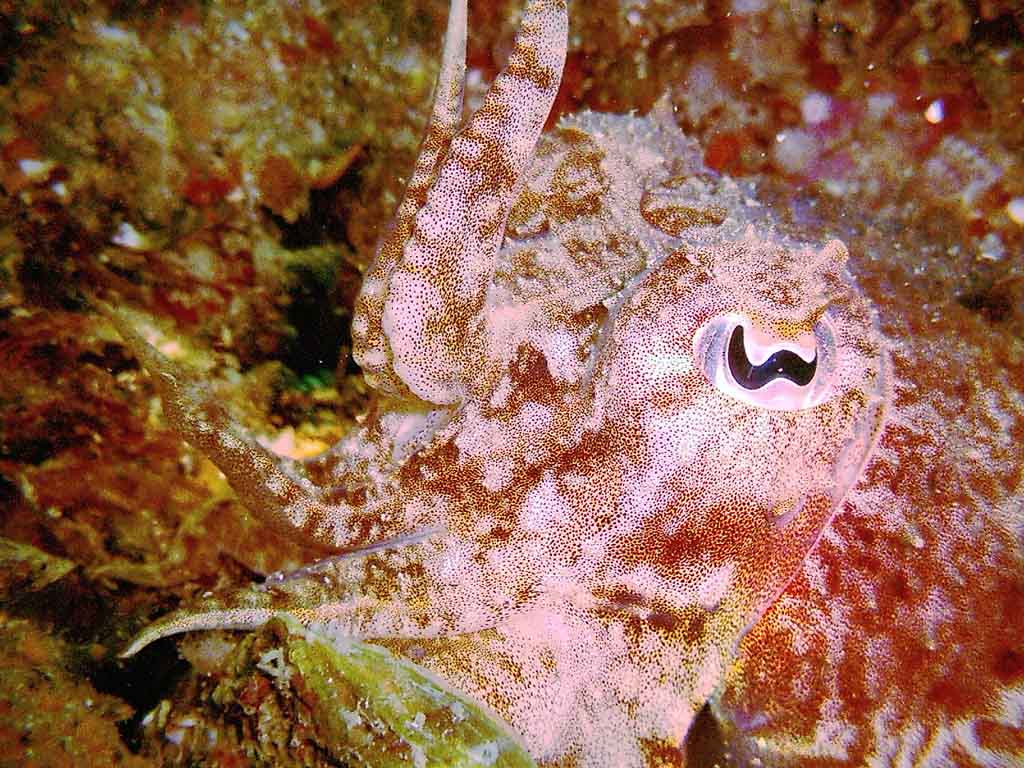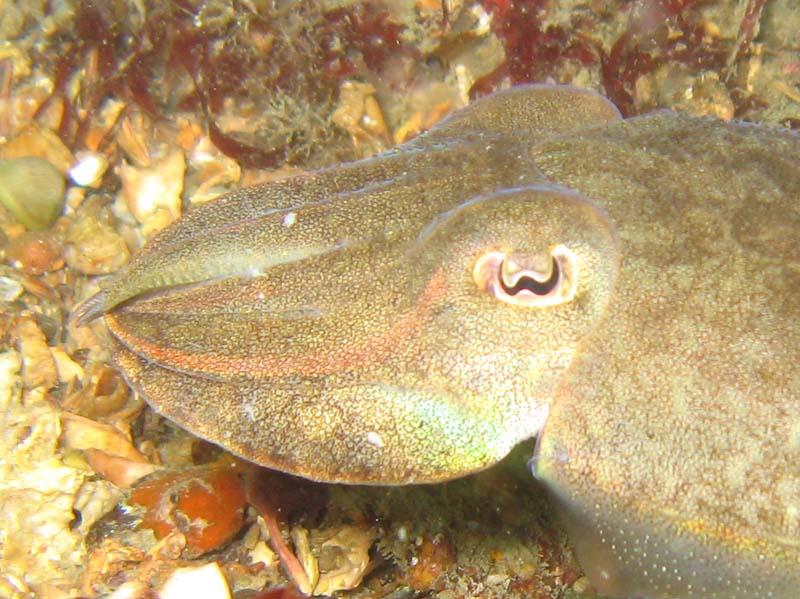Squidlike Creatures Turn Left to Avoid Predators

Smelling the scents of predators may help the cuttlefish brain prepare for quick escapes before it even hatches, new research finds.
The study helps explain why these squidlike cephalopods (and perhaps other animals) show differences between the two sides of their brains and bodies — known as lateralization. Lateralization is the reason most humans favor either their right or left hands, and many living organisms show some signs of lateralization.
Clever, color-changing cuttlefish preferentially turn left when confronted with danger, a side preference that is linked to differences in visual processing on either side of the cuttlefish brain. Researchers at the Université de Caen Basse-Normandie in France wanted to find out how this lateralization develops, and whether genes or environment play the biggest role.
They first exposed 193 cuttlefish eggs to one of three conditions: a predator condition, in which the eggs were exposed to water frequented by dangerous sea bass; a non-predator scent condition, in which the eggs were exposed to a tank of water containing harmless sea urchins; and a control condition, in which the eggs simply sat in plain water. [Cuttlefish Cuties: Photos of Color-Changing Cephalopods]
Three days after the eggs hatched, each cuttlefish baby was put in a T-shaped tanked filled with either clean water, sea bass-scented water, or sea-urchin water. The cuttlefish naturally sought shelter in the arms of the T, and the researchers recorded in over 10 trials how many times the cephalopods went left versus right.
The results showed that when the cuttlefish entered water scented with sea bass, they made for the left more often than for the right, regardless of where they had incubated when still eggs. But cuttlefish hatched with the scent of a predator already in their minds always turned left more often, no matter the scent in the T-shaped tank. That suggests pre-hatching exposure to predators makes lateralization stronger.
"This is the first evidence that predation pressure can directly influence the setting-up of lateralization," study researcher Christelle Jozet-Alves told LiveScience.
Get the world’s most fascinating discoveries delivered straight to your inbox.
Picking a side and sticking with it may help cuttlefish avoid indecision in split-second, life-or-death decisions, Jozet-Alves said. Lateralization may also help the animals pay attention to things on both sides of their bodies. For example, Jozet-Alves said, the left eye may keep an eye out for predator escape routes while the right eye scans for food.
The findings also show that lateralization is not simply genetic, but influenced by the pre-hatching environment. If lateralization were fixed in every cuttlefish at birth, Jozet-Alves said, predators would likely get savvy to the left-turn defense, so some flexibility is probably required.
"However, when environmental pressures are high, the advantages of being lateralized may be far more important than their disadvantages," she said.
The researchers report their results today (Dec. 11) in the journal Proceedings of the Royal Society B.
Follow Stephanie Pappas on Twitter @sipappas or LiveScience @livescience. We're also on Facebook & Google+.

Stephanie Pappas is a contributing writer for Live Science, covering topics ranging from geoscience to archaeology to the human brain and behavior. She was previously a senior writer for Live Science but is now a freelancer based in Denver, Colorado, and regularly contributes to Scientific American and The Monitor, the monthly magazine of the American Psychological Association. Stephanie received a bachelor's degree in psychology from the University of South Carolina and a graduate certificate in science communication from the University of California, Santa Cruz.



